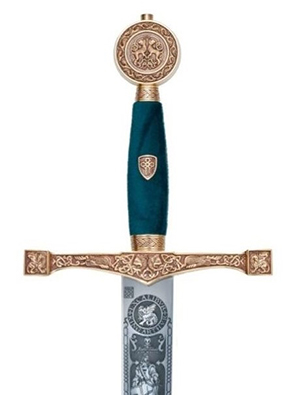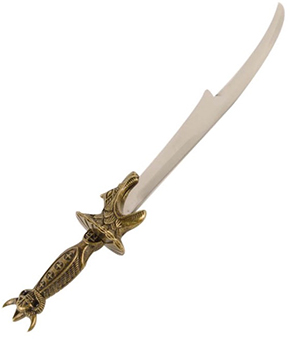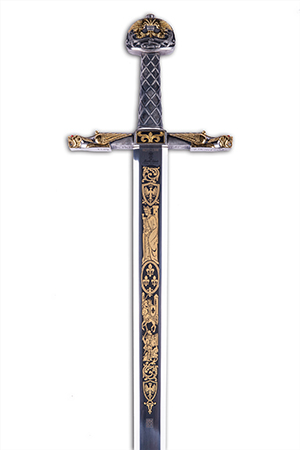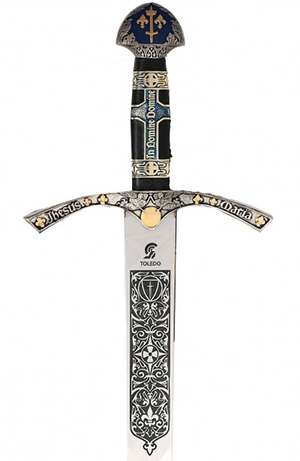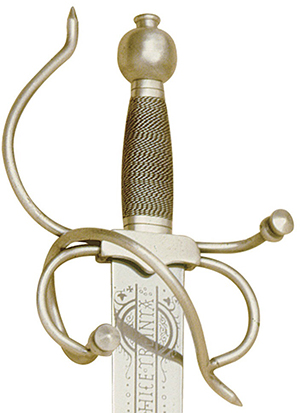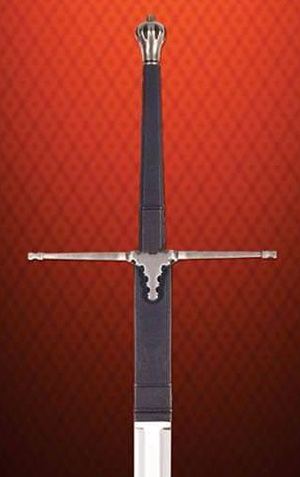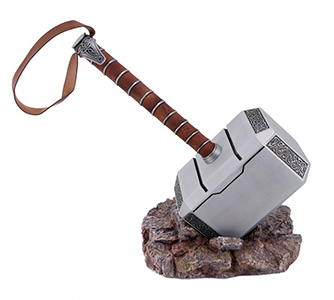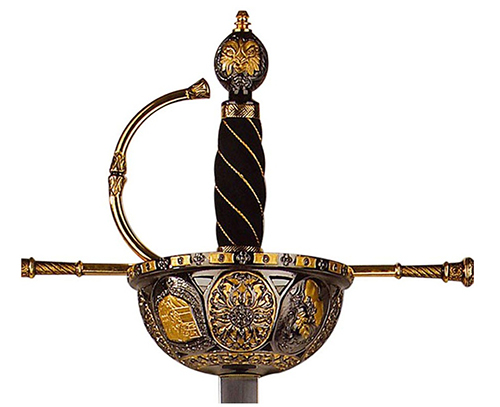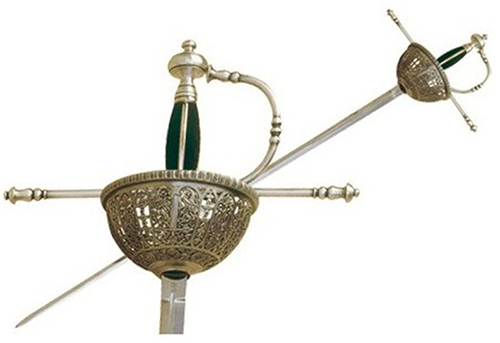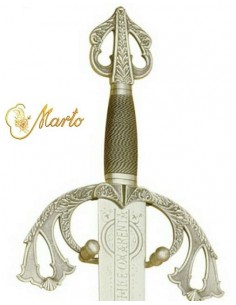innovation of the rapier sword, the Spanish Tizona, was a very precious weapon in its time, so that it became the last element that the hidalgos parted with when economic difficulties befell them. Many of these hidalgos served Spain to turn it into a great power worthy of an empire, the Spanish Empire.
There was a time in Spanish society, in which having a sword was a very common thing as well as necessary, since duels between knights were very frequent, in which defending honor became a matter of life or death, for not talk about the numerous robberies in which you risked your bag and your life. Everyone carried a sword, even if they had nothing to eat. It can be affirmed without fear of being wrong, that the Spanish tizona was a hallmark of that time.
The Spanish tizona is a bowl rapier, with special characteristics to the normal rapier. During the fifteenth century, with the multiplication of armor, sword blows with the old swords ceased to be effective in the face of the almost shielding of the knight who wears the armor. Then other swords appear with narrower blades designed to prick taking advantage of the few holes that the armor had.
It is, perhaps, in Italy at the end of the 15th century, where the rapier or dress sword appears for the first time. It is used mostly by civilians who live in cities and there is no self-respecting gentleman who does not carry a rapier. The first rapiers were heavy swords made both for cutting and for stabbing, but the type was refined and by the middle of the 16th century they were already spiked and refined swords. With the appearance of this type of sword, the prevailing fencing until then, where the blow and the slash were imposed, changed. Now the best swordsman is not the strongest but the most skilled. The triumph of this type of sword will give rise to a new type of fencing in which skill prevails over arm strength. The sword is wielded with the fingers, so it is necessary to safeguard them. For this, the loop guards arise. Luxury is attached to these swords, to the point that some guards could have encrusted jewels.
In northern Europe and England, rapiers were shorter in length and with broader blades. Its use was only military. On the other hand, in Italy and Spain, with few regulations on the use and possession of swords, these were very slender, reaching measurements of 120 cm. and the best rapier fencers were Spanish and Italian. At the beginning of the 17th century we can see in Spain the rapier with a cup garnish, with which the hand is much better protected.
These Spanish rapiers are very famous and spread very quickly. There is a great deal of activity in the manufacture of these cup or saucepan rapiers. New designs are applied to the bowl, some very expensive , adding precious stones or metals. They also became their sign of distinction, with knights vying for the honor of wearing the most beautiful or most expensive sword. In addition, these rapiers evolved as edged weapons and bowls with steel burrs flourished whose mission was to catch and break the opponent's blade. At this time the Thirds impose their law in Europe, they obtain victory after victory in Europe. The bowl sword was an integral part of the set of weapons, both officers and soldiers. Such was the fame achieved by these swords, both in Spain and abroad, that a lot of blacksmiths were born who dedicated themselves to forging Toledo rapiers.
When the Spanish empire collapsed, the same thing happened in Europe with the Spanish black sword, in favor of the French sword, much lighter and faster. In Spain, the death blow was dealt by the arrival of King Philip V of Bourbon from France, who brought with him French fashions and imposed more restrictive legislation on the use of weapons. All this led to the disappearance of the fashionable Spanish tizona sword and the trade attached to its production. However, they did not completely disappear as Spanish brands made in the 19th century have been found. There are even testimonies that they were used in the Spanish War of Independence.


